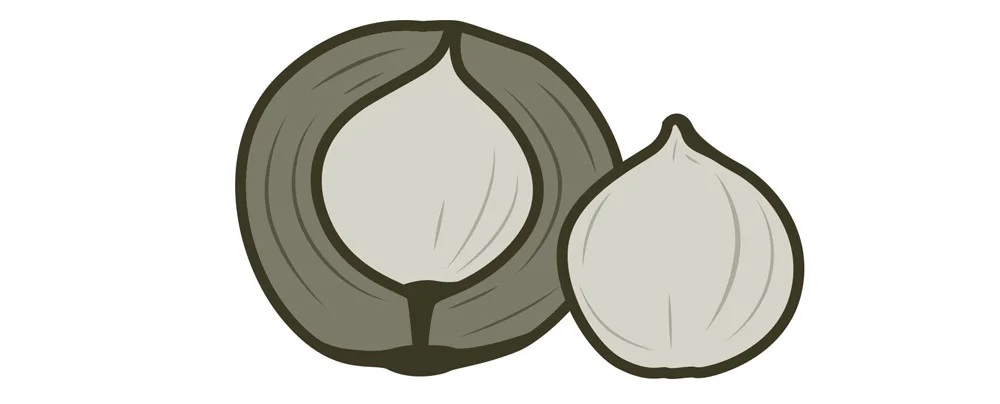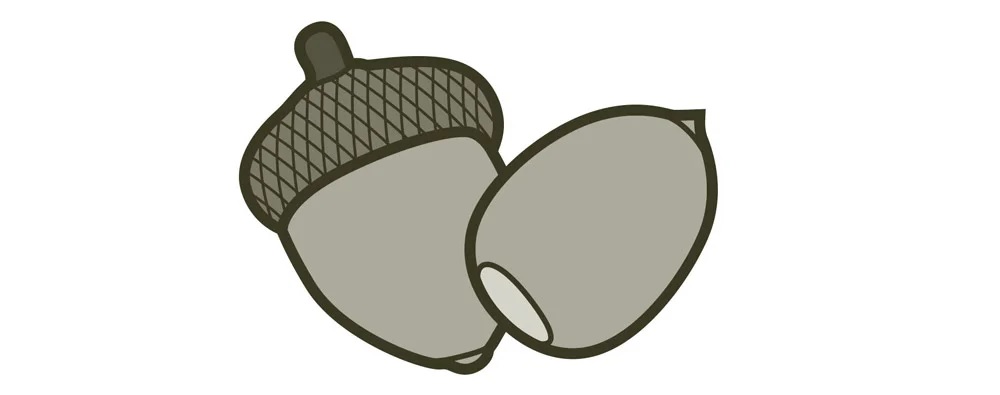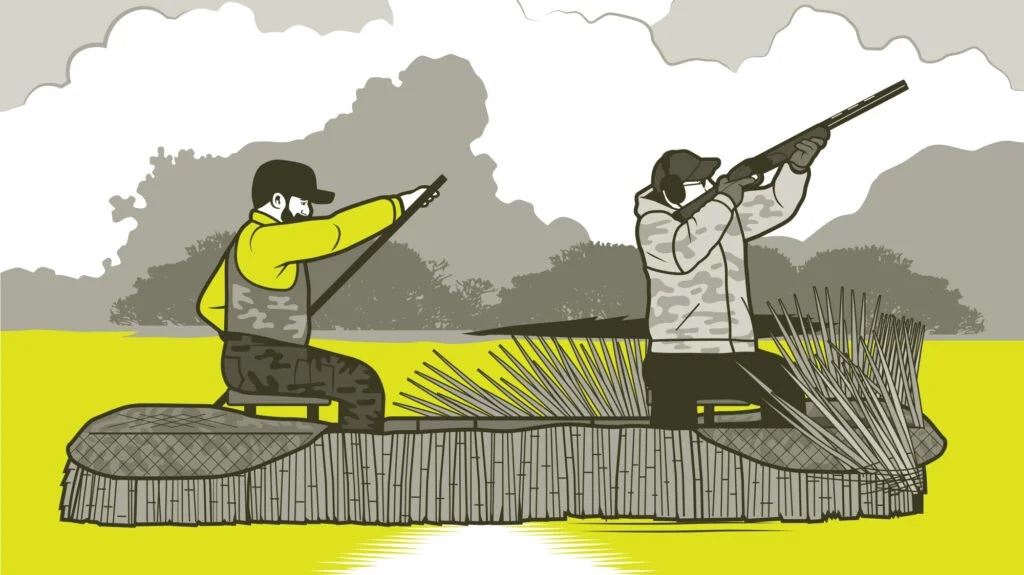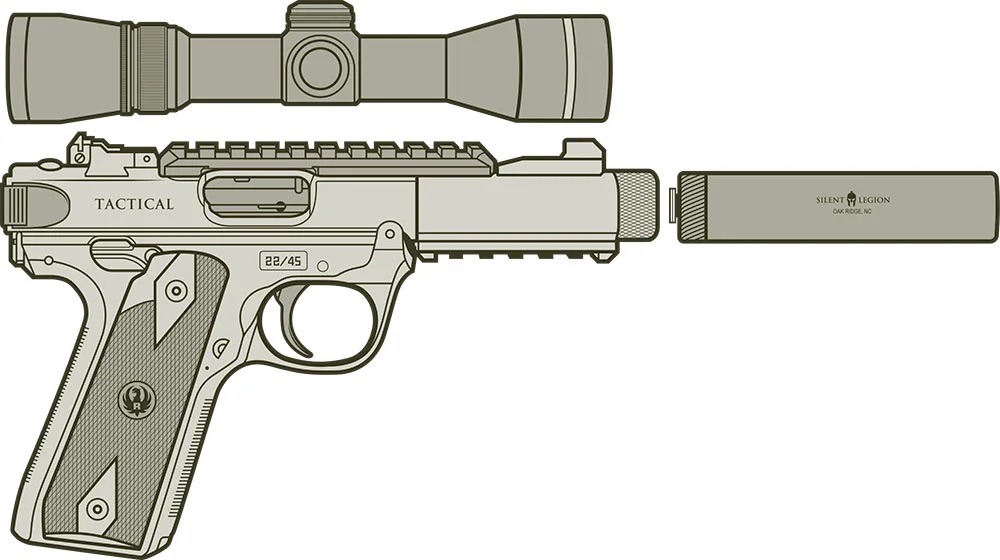
For inventors, by inventors. Go Gear Direct is a marketplace built to help inventors launch new outdoor gear and firearm accessories as well as to provide access to proven, high quality gear by seasoned American Made brands.
Go Gear Direct is motivated by the thoughts of fall and hunting. Also, investigating squirrel recipes is certainly opening some culinary avenues. We are ready to try some Buttermilk Fired Squirrel with Southern Gravy, aren't you.
This isn’t a warm-up, and this isn’t grandpa and tyke waiting against a tree stump. This is boat-sneaking, handgun-toting, 100-yard-shooting squirrel madness. And it’s some of the most fun you’ll have this fall
Tactic No. 1: Squirrel Sniping
Veteran Hunter Ricky King chases all manner of critters around his home state of Kentucky, but he’s best known for sniping Eastern gray squirrels at 100-plus yards, with the help of his tricked-out Anschutz .17 Mach 2. King got his start at long-range squirrel hunting 34 years ago, after a severe three-wheeler accident left him paralyzed from the waist down. He refused to let it keep him out of the woods. “I’d been hunting and fishing my whole life,” he says. “I wasn’t about to stop.” He learned how to navigate the woods with an ATV, but the machine’s limited mobility made getting close to game tough. So King adapted. To consistently shoot squirrels at deer hunting distances, he worked out a deadly system that can help you drop more far-off critters, too.
1. The 100-Yard Squirrel Rig In order to prevent meat damage, King prefers to make head shots. But hitting these small targets from 100 yards depends on the rifle as much as the shooter. For caliber, King recommends the .17 Mach 2 (a.k.a. .17 HM2). A .22 LR necked down to .17 caliber, the round reaches velocities of 2100 fps, nearly twice as fast as the standard-velocity .22 LR, and is laser flat to 125 yards. Should you pull a shot and hit body, it also won’t damage the meat nearly as much as the more popular .17 HMR. King’s rifle of choice is an out-of-production Anschutz Model 1502 Heavy-Barrel Classic, which will set you back more than $1,500 if you can find one.
Fortunately, Savage still chambers the .17 Mach 2 in the affordable Mark II FV ($351; Savage Arms), which King also recommends. And he likes to top his rifle with a Leupold VX-3i 6.5–20x40mm EFR CDS scope ($910; Leupold). If that’s too high for a squirrel scope, try the Nikon Prostaff Target EFR ($190; Nikon Sport Optics) as a budget alternative.
2. Group Effort: King takes particular care in sighting in his squirrel rig and stresses the importance of using a high-powered scope to ensure hyperaccurate shots. “I like to count their eyelashes at 100 yards,” he says. He zeroes his .17 Mach 2 dead nuts at 25 yards. That way, it’ll hit 1⁄2 inch high at 50 yards, a fuzz north at 75, and center-punch the X again at 100. You’ll need to be shooting supertight groups from a football field away before hitting the woods, he says, given the small size of a squirrel’s cranium.
3. Stay Grounded: The evening before a hunt, King scouts for a mast-heavy tree where squirrels may be hanging out. He sets up well before sunrise on the forage hotspot, making sure that he has a clear view of the ground, since that’s where most squirrels will be feeding in mid to late fall. He shoots from a utility box mounted to the front of his ATV, with rifle-rest bags to stabilize his gun, and also keeps a tripod ready at his side, should a squirrel flank him. You can try a similar setup, by lying prone or resting on a flat surface, with a tripod handy should you need to adjust or move.
4. Play It Cool: A big part of King’s strategy is staying patient and calm once he begins to pull the trigger. It’s easy to let a miss frazzle you, he says, but there’s no reason to let it. “Young squirrels won’t even clear off a tree after a shot, but the older ones will,” he says. You just have to wait them out, he adds. “They’ll be back.” —M.R.S.
In a Nutshell
Diehard small-game hunters let mast lead them to the squirrel mother lode. here’s a basic guide to what the critters are munching throughout fall
Early Season: Late August–October

Scout mature hardwood timber for hickory nuts, a favorite of squirrels. They like shagbark and pignut best of all, but any hickory tree with nuts will draw them in.
Midseason: September–November

By mid fall, squirrels will likely shift from hickories to acorns. They have a marked preference for white oaks, followed by red oaks. Beechnuts are appealing now, too.
Late Season: November–January

As food gets scarcer, look for squirrels on the ground digging up some of their cached nuts, or scavenging along field edges. Target black walnut trees, too, since they don’t drop all their mast until well into winter. —M.R.S.
Tactic No. 2: Aquatic Assault
Squirrels love to feed along creek banks and loaf in the treetops above a river, which is why hitting the water with a boat and a buddy is a guaranteed way to help fill your limit. That said, squirrels are well aware that when they hang out by the shoreline, they’re exposed to every fang and talon that prowls overhead—not to mention your load of 6s—so you have to bring your A game. Here’s how to do more than luck out on a squirrel or two during an early-morning float.

1. Vanishing Act: The better you hide your boat—be it a canoe, johnboat, or skiff—the more chances you’ll have at squirrels. Sure, you might kill a few with your standard duck-boat setup, but if you’re serious about killing a mess of squirrels, commit to fully covering your craft. First, drape camo netting over the gunwales to keep the hull from reflecting morning sunlight. Then, prop up vertical cover—river cane, bamboo, pruned tree branches—in the bow and stern and along the gunwales. Beech branches work great, since they hold brown leaves well into winter, as do evergreen holly boughs. Fine-tune things by visualizing the perspective of a wily, neurotic critter looking down from 30 feet overhead. Don’t neglect to camouflage the handles and blades of your paddle, either. Nothing will send a squirrel scurrying away faster than a paddle flash.
2. Inside Game: You may feel tempted to float down the middle of a creek so that you can look far downstream to catch a glimpse of feeding squirrels. The problem is that these squirrels are often looking far upstream, right at you. Instead, tuck your boat close to the bank and scull slowly downstream. That way, you’re more likely to close the distance on squirrels feeding in cover. Plus, those sunny banks can also grow thick with soft mast. Stay on the inside edges of any river bends, listening for squirrels on the ground, and be ready to shoot. Often, a squirrel will look at your boat for a second to decide whether you’re a floating tree or a threat, giving you a window to fire.
3. Double Up: I prefer to float with a short, quick-pointing over/under, like the Stevens 555, rather than a long autoloader. Compact o/u’s are easy to swing in a johnboat or canoe, and gunning with two chokes—one open for close-range shots, the other a bit tighter for treetop targets—comes in handy. Fair warning: Shooting seated in a boat is no cinch. Focus on swinging your torso without putting weight on your feet.
4. Net Outcome: Don’t forget the landing net. Once you get in the groove of working the bank, you’ll want to make quick, easy work out of scooping squirrels from the current, so you can get back in the action. —T.E.N.
Tactic No. 3: Handgun Spot-and-Stalk
Stalking squirrels with a rifle is fun, but extreme small-game hunters know nothing beats shooting a limit from 10 feet with a pistol. If you’re up for the challenge, you had better be ready to make a charge. Squirrels do most of their foraging on the ground throughout fall and winter, but right now is the best time for this tactic because squirrel numbers are high and there’s still hanging foliage for cover.

1. Rain Check: Watch the forecast and don’t make hunting plans until you get a cool, drizzly day with a light breeze. Those conditions portend slow-moving cold fronts and put critters on the move. The damp forest floor and rustling branches also make it easy for you to flit around like a squirrel-hunting ninja.
2. Waiting Game: Target old-growth hardwood forests with large mast-producing trees but sparse undergrowth. You probably won’t be able to hear foraging squirrels on the ground, but you should be able to see them from a distance. Ease through the woods slowly, watching and waiting more than you walk. Once you spot a squirrel, hold still, even if you have a good shot. Pulling off a charge will be worth the wait.
3. Set a Screen: Squirrels are malcontent creatures. They’ll search for the perfect nut, find it, chew on it for a minute, and then throw it aside for another. All this busywork usually takes place at the base of a big tree, which you can use to your advantage. As you watch the squirrel, slowly position yourself so that the trunk is between you and the critter, blocking you from view. Even if the squirrel does spot you, as long as you’re wearing camo and moving slowly, it probably won’t pay you any attention.
4. Last Meal: Once in place, give the squirrel a few seconds to find a worthy nut and really settle into its feast on the far side of the tree. Then, staying out of view, make long, soft strides to close the distance quickly. Once you’re within a couple yards, stop and wait for the squirrel to come around again. Once it does, it may not notice you at all. But if it happens to, it’ll likely just jump on the nearest tree for a better look. And that’s an easy shot for a squirrel ninja like you. —W.B.
The Ultimate Squirrel Pistol

1. The Gun: Ruger Mark IV 22/45 Tactical: This tactical version of Ruger’s legendary .22 pistol has a threaded 4.4-inch barrel with rails on top and underneath. You probably don’t need a tactical flashlight for squirrel hunting, but it could come in handy for shooting big bullfrogs in the off-season. $530
2. The Scope: Leupold VX-3 Handgun 2.5–8x32mm For precision squirrel shooting, a variable-power pistol scope makes sense, since you can dial up to 8X and clearly see a squirrel’s head high in a hickory tree. Without the suppressor, this scope will probably hang over a 4-inch gun’s muzzle. Choose your barrel length accordingly. $715
3. The Suppressor: Silent Legion Rimfire Direct Thread: Trust me, you’ll be shooting this pistol a bunch, and it’ll be surprisingly loud, so putting a can on it makes a world of sense. The Rimfire Direct Thread weighs just 2.7 ounces and costs just $315, in addition to the required stamps and fees, of course. $31 —W.B.
Bonus Tactic: Boss-Level Bowhunting
You might arrow a squirrel or two each season while waiting for a bruiser to cruise by, but creeping up on and sticking a critter demands next-level skill
Bowhunting for squirrels not only affords tons of shooting opportunities, but it also sharpens your eye as a marksman, since squirrels seldom hold still for long. Before you start launching arrows into the treetops, however, you’ll need the specialized gear designed for targeting the animals. Flu-flu arrows are essential. These arrows fly at standard velocities for 20 to 30 yards, then quickly decelerate and parachute to the ground, making for easy, safe recoveries. You’ll also want specialized small-game points that resist breaking and sticking in timber, such as Saunders Archery’s rubber bludgeons ($7–$11 for four; sausa.com) or Zwickey’s spring-arm Judo points ($4; zwickeyarcheryinc.com).
Once you’re geared up, start out by slipping through the hardwoods quietly while scanning the treetops. Stay on the lookout for acorn and nut pieces littered on the ground—a good sign squirrels are close—and listen for chittering and stirring leaves. Freeze if a squirrel suddenly appears within range. They see movement more than form, so if you hold still, there’s a good chance you’ll get a shot. If a squirrel is farther than 30 yards, wait until it turns away for a moment and then close the distance by stepping between bare or damp spots on the earth. When in range, crouch or kneel besides a tree from where you can draw back and let an arrow fly. —Patrick Meitin
Written by Will Brantley for Field & Stream and legally licensed through the Matcha publisher network. Please direct all licensing questions to [email protected].
The information below is required for social login
Create New Account